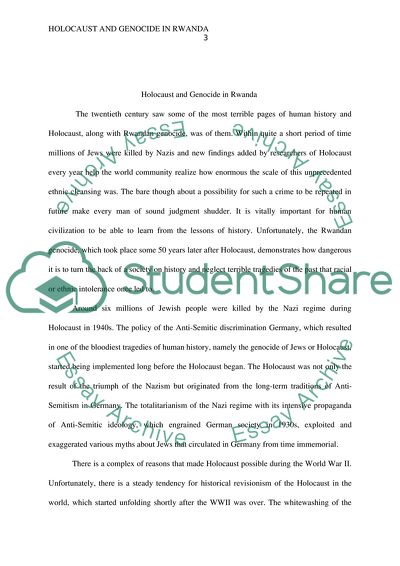Cite this document
(Holocaust and Genocide in Rwanda Essay Example | Topics and Well Written Essays - 2500 words, n.d.)
Holocaust and Genocide in Rwanda Essay Example | Topics and Well Written Essays - 2500 words. https://studentshare.org/history/1879782-holocaust-and-genocide-in-rwanda
Holocaust and Genocide in Rwanda Essay Example | Topics and Well Written Essays - 2500 words. https://studentshare.org/history/1879782-holocaust-and-genocide-in-rwanda
(Holocaust and Genocide in Rwanda Essay Example | Topics and Well Written Essays - 2500 Words)
Holocaust and Genocide in Rwanda Essay Example | Topics and Well Written Essays - 2500 Words. https://studentshare.org/history/1879782-holocaust-and-genocide-in-rwanda.
Holocaust and Genocide in Rwanda Essay Example | Topics and Well Written Essays - 2500 Words. https://studentshare.org/history/1879782-holocaust-and-genocide-in-rwanda.
“Holocaust and Genocide in Rwanda Essay Example | Topics and Well Written Essays - 2500 Words”. https://studentshare.org/history/1879782-holocaust-and-genocide-in-rwanda.


